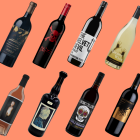What is it that makes wine fine? The short answer is: it depends. The concept of fine wine is not an exact science, and while there are certainly respected criteria that differentiate a £10 bottle of supermarket plonk from, say, a £500 bottle of Bordeaux, there are always exceptions to the supposed rules.
Wine critic Matt Kramer takes something of a philosophical view of the question, penning a column in 2016 whereby he argued the simple answer is that “fine wine is not a sure thing”, and that extraordinary wines come from vineyards where success is never guaranteed. That element of doubt and triumph in the face of it is, he says, the defining characteristic of a fine wine.
A true statement indeed, but again, there are exceptions here. You might have a go at cultivating your own grapes in your back garden in a bid to make your own wine, and you might end up with something passably drinkable, but the fact that the odds were against you from the outset does not mean you’re now sitting on a fine wine empire. So, approximations aside, a wine does need to tick a number of boxes to be considered fine.
Quality
The concept of quality is hugely subjective – a challenge that is exacerbated in the world of wine as not everyone has the palate or expertise of a sommelier. A bottle of Aldi’s ‘finest’ Bordeaux might taste acceptable to the average wine drinker, for example, but atrocious to a seasoned oenophile.
This is why the wine industry looks to critics to determine what is truly good and what is not, and a wine that has the makings of a fine wine will always boast a good balance, length and complexity.
Provenance
Historically, fine wines were the sole domain of long-established, Old World wine regions – France, Italy and so on. However, as New World wines have gained increasing popularity and acclaim, the origin of a wine is no longer enough to determine its potential as a fine wine. Look at the Cult Cabs of Napa Valley, for example, or the Argentine winery that’s just produced James Suckling’s wine of the year.
As such, the role provenance plays in a fine wine comes down to the regional spread of the vines used – the smaller and better-specified the better, with fine wine customarily coming from a well-defined, relatively small source of grapes. Think single vineyard premier crus, for example.
However, this is not always the case, particularly with New World wines which typically push the boundaries of traditional winemaking. Consider Penfold’s Grange – arguably the greatest wine in Australia. It’s always been a blend of two or more South Australian wine regions, which are often hundreds of miles apart – a concept that would likely horrify winemakers in Europe’s classical fine wine regions.
Age-worthiness
This parameter is clearer cut: fine wines can age in the bottle and continue to improve for a long time – non-fine wines won’t. Traditionally, fine wines are aged in wood before bottling, but this is becoming less of an absolute criteria – it’s the ability to age in-bottle that’s important.
Reputation
The track record of an estate or winemaker plays a significant role in determining whether a wine is fine or not. Granted, the reputation of an estate will also hinge on factors such as its marketing and its production volume (fewer bottles mean greater collectability, see below), but ultimately the longer an estate has been producing outstanding wine, the more highly-revered it will be among fine wine aficionados. Plus, of course, the longer it will have had to refine its processes and craftsmanship.
Again, though, there are exceptions which largely focus on New World wines. Screaming Eagle Winery’s first vintage was the 1992 – a mere infant compared to the likes of say, Chateau Haut Brion, which has been producing wines since the 16th century. However, critics generally regard the Napa Cult Cab as a fine wine thanks to its consistently superb quality and age-worthiness, despite its relatively short history.
Rarity and price
The above features of a fine wine – the craftsmanship involved, the reputation of the producer, the quality of materials – means that production is often limited. Unlike the bulk wines you’ll find on supermarket shelves which are produced by the hundreds of thousands – if not millions – of bottles, a fine wine is notable for its comparative scarcity, with estates producing only several thousand bottles of each vintage, and oftentimes much fewer.
The laws of supply and demand therefore dictate that a sought-after wine in short supply is able to command a higher price. As such, a further hallmark of a fine wine is its cost, and generally speaking the greater the alignment of quality, reputation, age-worthiness and provenance, the greater the price tag.
Again, however, another exception: Champagne. Compared to the traditional Claret producers, labels such as Bollinger and Roederer’s Cristal often have vast production runs, and yet still sell for high sums. The quality of the wines produced by these houses should not be underestimated, but in the world of Champagne reputation reigns supreme, and higher prices are often indicative of the label’s status as a luxury lifestyle item.






